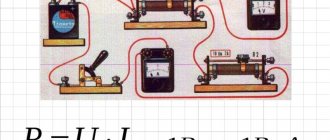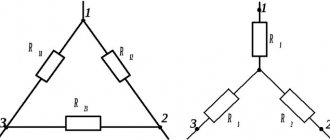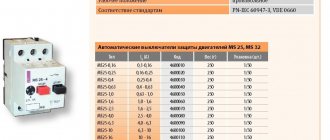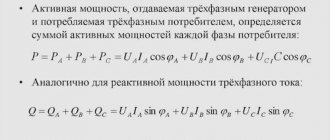Mobile devices receive energy for operation from a battery. Its main characteristic is electrical capacitance. It is measured in ampere-hours (denoted Ah). Its value, for example, 55 Ah in the battery labeling characterizes the time during which the battery will provide power to an autonomous device. True, it is necessary to clarify how it will depend on the level of energy consumption by the device itself.
Terminology, concepts, definitions
According to GOST R 53165-2008, the concept of battery capacity means “the amount of electricity, Ah, that a charged battery can supply under given conditions.” This definition seems general and non-specific, but the concept of a nominal 20-hour capacity, denoted as C20, allows you to better understand what we are talking about.
IMPORTANT - do not discharge the battery to a voltage of less than 10.5 V. In this case, it may be damaged or at least a reduction in the number of possible charge-discharge cycles.
GOST characterizes C20 as “the amount of electricity, Ah, that a charged battery delivers during a 20-hour discharge with a rated current under given conditions.” It is believed that the battery should not be discharged below 10.5 V. Based on the given voltage value, the battery shown in the photo above (55 Ah) is capable of delivering a current of 2.75 A for 20 hours, and at the same time the battery voltage does not fall below 10.5 V (55 Ah: 20 h = 2.75 A).
Expert opinion
Alexey Bartosh
Specialist in repair and maintenance of electrical equipment and industrial electronics.
Ask a Question
An interesting concept may be: nominal reserve capacity - Cρ. According to GOST, this is “the estimated discharge time (in minutes) during which the battery can produce a discharge current of 25 A to a final voltage of 10.5 V.” And also the concept - actual reserve capacity, Cρph - “the resulting discharge time for comparison with the nominal one.”
All of the above applies primarily to automotive lead-acid batteries used as starter batteries or emergency power sources. In electronic technology, lithium-ion batteries are more often used; they have their own characteristics, but the concept of electrical capacity also applies to them.
How to convert milliamp hours to amp hours or watt hours
In fact, the battery acts as a source of energy, and its power is measured in watts. Power is determined by the product of current and voltage, i.e. P = I × U. For our battery (55 Ah) it is easy to find out how many watts can be obtained from it. Based on the given formula for the data indicated on the label, the result will be equal to: 55 A·h · 12 V = 660 Wh.
Energy can be calculated in joules. The conversion is based on the ratio 1 W = 3600 J/h. Thus, the stored energy will be equal to 3600 × 660 = 2376000 J or 2.376 MJ.
Ampere-hours as a unit of measurement are a large value. It is better suited for powerful consumers (for example, cars, tractors, and other similar products. For less energy-intensive devices - mobile or autonomous devices - derivative units of measurement are often used, for example, milliamp-hours (1 ampere = 1000 milliamps).
They are designated: milliampere hour, or abbreviated as mAh. Converting units of measurement is easy, using the above ratio between ampere and milliampere. If the capacity of the phone battery is 1500 mAh, then it will be equal to 1.5 Ah (1500 mAh : 1000 = 1.5 Ah).
Examples of static electricity
Thunderstorms on Earth. View from the International Space Station. Photos by NASA.
Since childhood, we have been instinctively afraid of thunder, although in itself it is absolutely safe - just an acoustic consequence of a menacing lightning strike, which is caused by atmospheric static electricity. Sailors from the times of the sailing fleet fell into awe when they observed the lights of St. Elmo on their masts, which are also a manifestation of atmospheric static electricity. People endowed the supreme gods of ancient religions with an integral attribute in the form of lightning, be it the Greek Zeus, the Roman Jupiter, the Scandinavian Thor or the Russian Perun.
Air Canada plane on the ground during refueling
Centuries have passed since people first began to be interested in electricity, and sometimes we do not even suspect that scientists, having drawn thoughtful conclusions from the study of static electricity, are saving us from the horrors of fires and explosions. We've tamed electrostatics by pointing lightning rods at the sky and equipping fuel tankers with grounding devices that allow electrostatic charges to escape safely into the ground. And, nevertheless, static electricity continues to misbehave, interfering with the reception of radio signals - after all, up to 2000 thunderstorms are raging on Earth at the same time, which generate up to 50 lightning strikes every second.
People have been studying static electricity since time immemorial; We even owe the term “electron” to the ancient Greeks, although they meant something slightly different by this - that’s what they called amber, which was perfectly electrified by friction (other - Greek ἤλεκτρον - amber). Unfortunately, the science of static electricity was not without casualties - Russian scientist Georg Wilhelm Richmann was killed by a lightning bolt during an experiment, which is the most dangerous manifestation of atmospheric static electricity.
Static electricity and weather
To a first approximation, the mechanism of formation of charges in a thundercloud is in many ways similar to the mechanism of electrification of a comb - electrification by friction occurs in the same way. Ice floes, formed from small droplets of water, cooled due to transport by rising air currents to the upper, colder part of the cloud, collide with each other. Larger pieces of ice are charged negatively, and smaller pieces are charged positively. Due to the difference in weight, a redistribution of ice floes in the cloud occurs: large, heavier floes fall to the lower part of the cloud, and smaller, lighter floes gather at the top of the thundercloud. Although the cloud as a whole remains neutral, the lower part of the cloud receives a negative charge, and the upper part receives a positive charge.
Franklin on a hundred dollar bill
Just as an electrified comb attracts a balloon by inducing an opposite charge on the side closest to the comb, a thundercloud induces a positive charge on the surface of the Earth. As a thundercloud develops, the charges increase, while the field strength between them increases, and when the field strength exceeds a critical value for the given weather conditions, an electrical breakdown of the air occurs - a lightning discharge.
Trust in God, and don’t forget about the lightning rod!
Humanity is indebted to Benjamin Franklin—later President of the Supreme Executive Council of Pennsylvania and the first Postmaster General of the United States—for the invention of the lightning rod (it would be more accurate to call it a lightning rod), which forever saved the world's population from fires caused by lightning striking buildings. By the way, Franklin did not patent his invention, making it available to all mankind.
Lightning did not always cause only destruction - the Ural ore miners determined the location of iron and copper ores precisely by the frequency of lightning strikes at certain points in the area.
Leyden jars on display at the Canadian Museum of Science and Technology
Among the scientists who devoted their time to studying the phenomena of electrostatics, it is necessary to mention the Englishman Michael Faraday, later one of the founders of electrodynamics, and the Dutchman Pieter van Muschenbrouck, the inventor of the prototype of the electric capacitor - the famous Leyden jar.
Watching DTM, IndyCar or Formula 1 races, we don’t even suspect that mechanics call pilots to change tires to rain tires, relying on weather radar data. And these data, in turn, are based precisely on the electrical characteristics of approaching thunderclouds.
Weather radar at the airport. Pearson, Toronto
Static electricity is our friend and enemy at the same time: radio engineers do not like it when they pull on grounding bracelets when repairing burnt circuit boards as a result of a nearby lightning strike - in this case, as a rule, the input stages of the equipment fail. If grounding equipment is faulty, it can cause severe man-made disasters with tragic consequences - fires and explosions of entire factories.
Static electricity in medicine
However, it comes to the aid of people with heart rhythm disturbances caused by chaotic convulsive contractions of the patient’s heart. Its normal operation is restored by passing a small electrostatic discharge using a device called a defibrillator. The scene of a patient returning from the dead with the help of a defibrillator is a kind of classic for a certain genre of cinema. It should be noted that movies traditionally show a monitor with a missing heartbeat signal and an ominous straight line, when in fact using a defibrillator does not help if the patient's heart has stopped.
The wing dischargers on the Boeing 738-800 are designed to eliminate static electricity to ensure reliable operation of the avionics.
Other examples
It would be useful to remember the need to metallize aircraft to protect against static electricity, that is, to connect all metal parts of the aircraft, including the engine, into one electrically integral structure. Static dischargers are installed at the tips of the entire tail of the aircraft to drain static electricity that accumulates during flight due to air friction against the aircraft body. These measures are necessary to protect against interference caused by static electricity and to ensure reliable operation of the avionics equipment.
Electrostatics plays a certain role in introducing students to the section “Electricity” - perhaps no other section of physics knows more spectacular experiments - here you have hair standing on end, and a balloon chasing a comb, and the mysterious glow of fluorescent lamps without any connection wires! But this glow effect of gas-filled devices saves the lives of electricians dealing with high voltage in modern power lines and distribution networks.
And most importantly, scientists have come to the conclusion that we probably owe the appearance of life on Earth to static electricity, or more precisely to its discharges in the form of lightning. During experiments in the middle of the last century, with the passage of electrical discharges through a mixture of gases, close in composition to the primary composition of the Earth’s atmosphere, one of the amino acids was obtained, which is the “building block” of our life.
Uninterruptible power supplies (UPS) are used to protect equipment from voltage dips, power outages and high voltage pulses in an industrial power supply network that can occur during indirect lightning strikes
To tame electrostatics, it is very important to know the potential difference or electrical voltage, for the measurement of which instruments called voltmeters were invented. The concept of electrical voltage was introduced by the 19th century Italian scientist Alessandro Volta, after whom this unit is named. At one time, galvanometers named after Volta's compatriot Luigi Galvani were used to measure electrostatic voltage. Unfortunately, these electrodynamic type devices introduced distortions into the measurements.
Why are amp hours used?
Such markings make it easy to determine how long the battery will be able to supply the required current. To do this, it is enough to divide the ampere-hour data given on the label by the required current. For example, from a charged and serviceable battery with a capacity of 55 Ah, a current of 5.5 A can be obtained for 10 hours (the calculation is simple: 55 Ah: 5.5 A = 10 hours).
Of course, the estimate is approximate and does not mean that the result obtained will correspond to the forecasts. The fact is that during periodic operation of the battery (when it is sometimes connected or not to the load), when it does not release energy, its capacity is somewhat restored. In addition, if the current exceeds the permissible value, the battery may simply fail.
Expert opinion
Alexey Bartosh
Specialist in repair and maintenance of electrical equipment and industrial electronics.
Ask a Question
IMPORTANT. The battery capacity is not a constant value and depends on operating conditions, design features, and its technical condition. Therefore, it is necessary to constantly monitor the battery charge level.
Capacity value in Wh and mAh - a fundamental difference
The device potential is most accurately described by the absolute constant capacity, measured in Wh. For example, for Carku E-Power Elite it is 44.4 Wh. This means that this device can power a 44.4 W load for one hour at any current and voltage.
If the capacity in Wh is not indicated in the technical specifications of the ROM, it is very simple to calculate it - you need to multiply its value in Ah by the nominal voltage of the battery in volts. The capacity value in mAh is a relative value that describes the capacity of a device for a specific voltage. That is, for example, for 5 V the battery will have one capacity, and for 19 V - another.
To determine the absolute constant capacity in Wh, you need to know its value in Ah (ampere-hour). 1 Ah = 1000 mAh. To get the capacity in Ah, you need to divide the mAh value by 1000.
How to determine the actual characteristics of a battery
The battery capacity can vary significantly during operation. Without touching on the specific use of the battery, it is easy to assess its actual current condition. Two methods are used for this.
- Laboratory. A pre-charged battery is discharged for a long time with a low current, recording the time during which this discharge is carried out. The capacity of a charged battery will be equal to the product of time and current. The complexity of the method lies in the use of special equipment.
- Domestic. The approach is the same, but uses a regular 55-watt low-beam or high-beam bulb, e.g. It provides a current of 4.6 A. A light bulb is connected to the pre-charged battery and the discharge time is noted. In this case, it is advisable to monitor the voltage at the battery terminals. When it reaches 10.5 V, the discharge is stopped. The product of the discharge time and the current (in our case 4.6 A) gives the battery capacity. So, if the process took 10 hours, then the battery capacity will be 46 Ah.
Using a light bulb to assess the condition of the battery will not provide the same accuracy as laboratory equipment, but it will approximately determine the current characteristics of the battery.
Why don't manufacturers want to change the mAh designation to Ah?
It's simple here - it's a good rule in marketing: "Don't try to pointlessly change consumer behavior." If you and I today invented a new battery and can choose between the designations “3000 mAh” and “3.0 Ah”, then for us, as a manufacturer, there is no difference.
For the consumer, a slight complication in choice will lead to a change in marketing behavior.
Although you and I simply shifted the multiplier in the International System of Units. Not everyone, not everyone, but some people will be confused. You and I will encounter a situation where someone is confused. And this someone could be a potential client.
What does mAh mean on a battery?
As it has already turned out, mAh is not an indicator of energy, but is related to it. Everything becomes clear with simple mathematical calculations.
With data on the phone battery of 5000 mAh and 1 milliamp consumed, the battery will last for 5000 hours, with a loss of 2 milliamps it will last for 2500 hours, with 1000 milliamps spent the battery will last for 5 hours.
There are often situations when a battery with 6000 mah initially produces a current of 6 Amperes per hour, but then less and less, that is, it “runs out”. It depends on what tasks are performed on the electronic device. It is known that if you listen to music or watch a video on your smartphone, the gadget will sit down faster than if you read an e-book in the same amount of time.
Sometimes on the packaging of electronic devices you can see the value: “2000 mah two cells.” What does it mean? mAh to calculate the total capacity of 2000 needs to be doubled, and you get a total capacity of 4000 mah (2000*2).
How long does a 20000 mAh battery last?
For example, a common situation: the “native” charger for the gadget is lost (broken). They gave me another one for use, the output of which is indicated “800 mA”, but now it is not clear how long to charge it. The phone battery says: 2500 mA, and there is an incomprehensible inscription: Standard charge 18 hr at 200 mA. How to figure it all out? Again, calculations: the battery is capable of accumulating the energy of a current of 1500 mA, which is theoretically issued within an hour until completely discharged.
The inscription on the battery indicates that it should be charged with a current of 200 mA for 18 hours, and the charger can produce a current of 800 mA. All that remains is to calculate the clock: the charging current is 4 times greater (800 mA divided by 200 mA), which means that it will take 4 times less time to charge the battery. Thus, the battery will be charged with this charger in 4.5 hours (10 hours divided by 4 hours).
Ideally, you should buy external batteries with an output current of 2A or more, since the output current affects how quickly the gadget will charge.
For example, if an external charger has a capacity of 20,000 mAh, it will be enough for 17 full charges of the smartphone, but, again, it all depends on the “native” battery.
Ampere from a physics point of view
In physics and electrical engineering, ampere is a quantity that characterizes the strength of current in quantitative terms. Various methods are used to determine it. Among them, the most widespread method is direct measurements, when an ammeter, tester or multimeter is used. When taking measurements, these devices are connected in series to the electrical circuit.
Another method is considered indirect, requiring special calculations. In this case, it is necessary to know the voltage applied to a given section of the circuit and the resistance of this section. After which, the current strength is easily determined by the formula I = U/R, and the result obtained is displayed in amperes.
In practice, amperes are used quite rarely, since this unit is considered too large for ordinary use. Therefore, most specialists use multiple units - milliamps (10-3A) and microamps (10-6A), which can be otherwise designated as 0.001 A and 0.000001 A. However, when performing calculations, it is necessary to again convert milliamps into amperes and in all use these units in formulas. It is at this stage that many people have a question about how to convert milliamps to amperes.
What is Wh
Wh (watt-hour) will tell you how much power is stored in the battery, that is, 1 Wh has 1 watt of power transmitted over an hour through the conductor. As a rule, the Wh designation is more understandable to gadget users, because it is easier to understand how many hours the laptop will need to operate and how long the battery will last.
For example, the laptop battery says 90Wh. Knowing that 1 watt is consumed per hour, you can calculate the operating time of a laptop that needs at least 60 watts of power to operate: 90Wh divided by 60 watts equals 1.5 hours of operation of an electronic device.
The question arises: where did these 60 watts come from? They are almost always indicated on the laptop power supply in the form of volts and amperes, which need to be multiplied with each other - this is how you get the power figure, these notorious 60 or 70 watts.
How to measure
In order to determine the current strength in a specific section of the circuit, the measuring instruments listed above are used. Among them, the most accurate is the ammeter, which measures only one value using one scale. However, testers and multimeters are considered more convenient, with the help of which they measure not only current strength, but also other electrical quantities in various ranges. These devices have the ability to switch from one unit of measurement to another and accurately determine how many milliamps are in an ampere.
What else affects the performance of electronic devices?
Much depends on the type of battery - most electronic gadgets today have a lithium-ion battery, which can be charged without waiting for complete discharge.
Moreover, hardware also affects performance: the more powerful the phone, the more mA should be in the battery. For example, one gadget with a 1550 mAh battery can work for 5 days without recharging, while another with a 3500 mAh battery will not last even a day.
The display is also a big energy consumer. The secret here is in the screen production technology. IPS will require more power than Super AMOLED, which is very energy efficient due to the predominant black color on the screen. Don't write off brightness and resolution.
It is important that your phone has as few unnecessary background processes and services enabled as possible. Fortunately, devices from Sony and Samsung include special utilities in the software that optimize the operation of the device and save energy.
And that’s not all: don’t forget about the heart of any electronic gadget – the processor, which also loves to “eat” well.
It turns out that this is not so important if you take a closer look at the other characteristics. Therefore, when buying a new device, you should pay attention not only to the battery, but also to the hardware, software and screen type.











